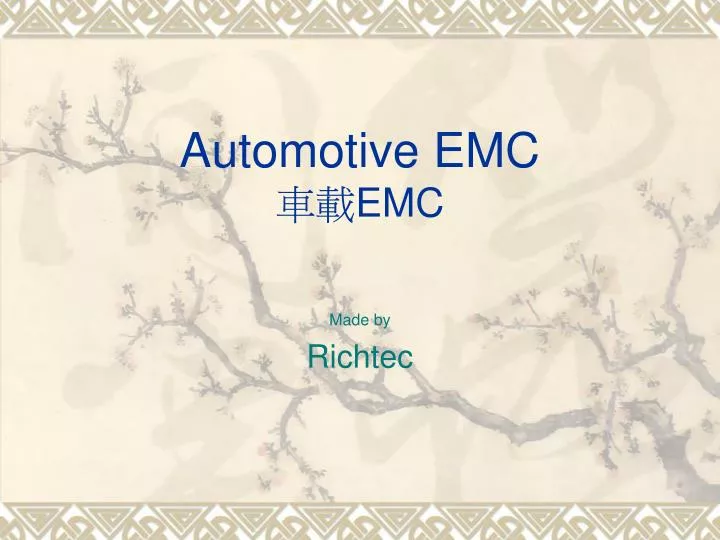
The motor or motors are installed on the axles or sometimes directly on the wheels. The battery is usually accommodated at the rear and the inverter at the front. To save space and improve the weight distribution, the individual drive components are distributed throughout the vehicle. In order to keep these to a minimum, most conventional designs to date are based on a complete encapsulation or shielding. The steep edges of the pulses cause considerable EMC problems on both the input and output sides of the inverters, which manifest themselves as both radiated and conducted emissions. The inverters operate with pulse width modulation control of the motor.

1: A battery and inverter system with cables between. These EMC requirements are regulated by international standards such as CISPR 25 or the EU Directive ECE-R10.įig. It is also important that no interference affects systems outside the vehicle. Consequently, the number one priority when developing such vehicles is to ensure that the individual systems, crammed into very restricted spaces, do not cause mutual interference. For, in addition to the increasingly complex systems for safety, comfort and communication, it is the electrical drive systems – the high-voltage battery, inverter, and at least one electric motor – that really up the ante the for the electronic systems.

Emc cars full#
The use of EMC filters offers a reliable and weight-saving way to eliminate mutual interference from the densely packed sources.īoth hybrid and fully electric drive vehicles, or 圎Vs, are packed full of electronics which far exceed that of combustion-engined vehicles in both quantity and technical requirements. This applies in particular to electric vehicles (圎Vs) with their additional power electronics for the motor inverters. As cars are equipped with more and more electronic systems, the probability of electromagnetic interference problems increase.


 0 kommentar(er)
0 kommentar(er)
